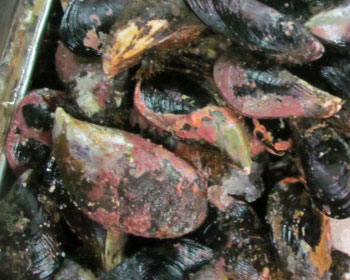The Bureau of Fisheries and Aquatic Resources (BFAR) prohibits harvesting, selling, and eating shellfish products such as mussels, “halaan,” and oysters from seven locations in the country because of red tide.
According to BFAR, the coastlines of Puerto Princesa Bay, Puerto Princesa City in Palawan; coastal waters of Dauis and Tagbilaran City in Bohol; Irong, San Pedro, and Silanga in Western Samar; and Cancabato Bay, Tacloban City in Leyte are high in the red tide.
Concerning this, BFAR asked the local chief executives to guard the said areas carefully and prevent the shellfish products from reaching the supermarket.
Eating shellfish meat with red tide toxin can cause nausea, diarrhea, stomach aches, and even death.
Red tide facts in the Philippines

According to BFAR, red tide is a term used to describe a coastal phenomenon in which the water is discolored by high algal biomass or concentration of algae. The discoloration may not necessarily be red, but it may also appear yellow, brown, green, blue, milky, depending on the organisms involved. It may either be harmful or harmless.
Filter-feeding shellfish, which include clams, cockles, oysters, mussels, and scallops from red tide affected coastal areas are unsafe to eat.
Fish, squids, crabs, and shrimps can be eaten during a red tide because the toxin is not absorbed in the edible tissues of these animals. However, the gills, viscera, and internal organs of fish must be removed before cooking.
Toxic shellfish taste and appear no different from nontoxic shellfish, and cooking does not destroy the red tide toxin. Testing is the only way to determine if shellfish contain unsafe levels of toxin.
Also read: Fish kill in Cebu, 700 kilos of fish died
